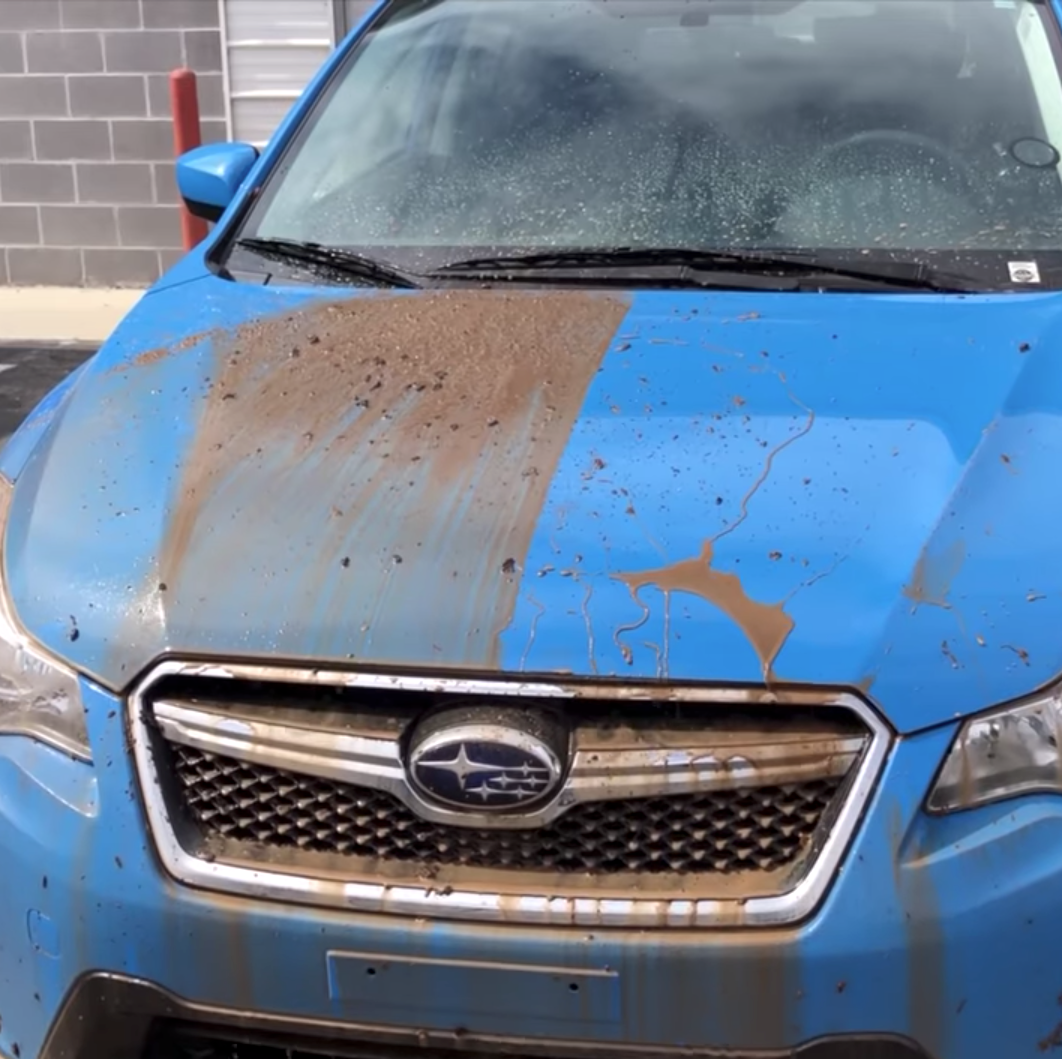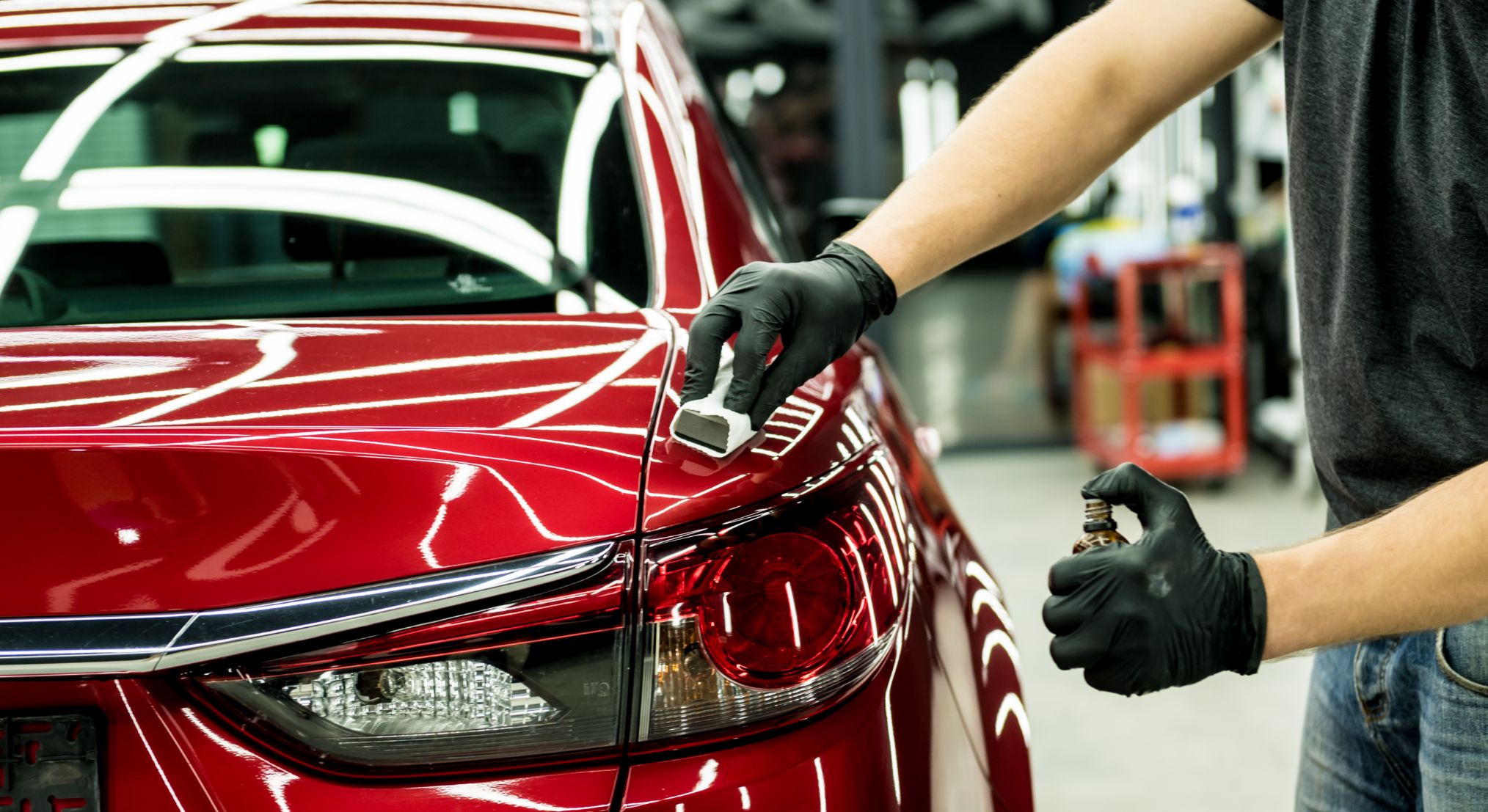Top Benefits of Ceramic Coating for Long-Lasting Car Care
Wiki Article
Ceramic Covering vs. Typical Wax: Which Provides Better Long-Term Protection?
The argument in between ceramic finishings and typical wax for vehicle protection has actually gathered considerable interest amongst automobile fanatics and professionals alike. While both satisfy of safeguarding paint, their differences in toughness, application, and lasting maintenance costs may affect a consumer's choice. Ceramic finishings boast remarkable durability and resistance to environmental aspects, yet the complexity of their application elevates inquiries about accessibility and practicality. As we check out these contrasting options, it becomes important to think about not only the immediate benefits however also the ramifications for vehicle care over time.Overview of Ceramic Finish
Ceramic finish has gotten significant popularity among automotive fanatics and detailers alike due to its advanced protective top qualities. This innovative modern technology is created to create a resilient, hydrophobic shield over an automobile's paint surface area, substantially boosting its resistance to ecological contaminants such as dust, UV rays, and chemical stains. Unlike typical wax, which provides a temporary layer of security, ceramic finishings bond at a molecular degree with the paint, offering resilient sturdiness-- typically prolonging beyond two years with correct upkeep.The application procedure entails precise preparation of the automobile's surface, including cleaning and polishing to make sure optimal adhesion. Once applied, the finishing treatments to form a durable layer that not only adds deepness and gloss to the paint but additionally simplifies upkeep. With its hydrophobic residential or commercial properties, ceramic finish enables water and dirt to glide off even more quickly, decreasing the regularity of washes and minimizing the danger of swirl marks.
In addition, ceramic layers are available in different solutions, allowing customers to pick products tailored to their certain demands and preferences. Generally, ceramic finish represents a significant advancement in paint protection modern technology, supplying exceptional performance contrasted to conventional choices.
Introduction of Traditional Wax
Generally considered as a staple in automotive care, wax functions as a popular selection for those looking for a straightforward technique to enhance and protect their car's paint - ceramic coating. Automotive wax commonly consists of natural ingredients, such as carnauba, or synthetic compounds, made to produce a safety layer on the surface of the paint. This layer not just enhances the car's gloss and shine but likewise provides an obstacle against ecological contaminantsThe application of wax is normally easy to use, making it available for both experts and DIY fanatics. It can be applied by hand or maker, enabling convenience in the outlining process. As soon as applied, wax requires a treating period, after which it solidifies to develop a protective shell. Wax is likewise understood for its capability to fend off water, advertising a beading impact that helps in the avoidance of water spots and deterioration.
Nevertheless, while wax works for boosting the visual allure of a car, it is vital to note that the security it uses might necessitate more constant reapplication contrasted to different products, such as ceramic finishings. Overall, conventional wax remains a preferred option for those focusing on simplicity of usage and instant visual enhancement.
Sturdiness and Longevity Comparison
While both ceramic layers and traditional wax deal safety advantages for automotive paint, their toughness and longevity differ significantly. Typical wax, normally made from natural carnauba or synthetic polymers, generally offers a protective layer that lasts about 3 to six months. This reasonably brief life-span necessitates normal reapplication to preserve ideal protection.In contrast, ceramic coverings are engineered from sophisticated nanotechnology, developing a covalent bond with the paint surface. This results in a robust, hydrophobic layer that can endure for 2 to 5 years, depending upon the product and environmental conditions. The remarkable resilience of ceramic coverings is connected to their chemical structure, which offers improved resistance to scrapes, UV rays, and oxidation.

Protection Against Environmental Factors
Securing a car's paint from environmental factors is crucial for preserving its look and worth gradually. Autos are continuously revealed to a range of elements, including UV rays, bird droppings, tree sap, acid rainfall, and road gunk, every one of which can endanger the integrity of the paintwork.Ceramic layers supply a durable protection against these environmental assailants. Unlike traditional wax, which can break down swiftly under UV exposure, ceramic coatings form a sturdy, hydrophobic layer that stands up to the harmful results of sunshine and toxic wastes. This advanced innovation develops a chemical bond with the lorry's surface, using exceptional defense that lasts for several years, also in severe problems.
Traditional wax, while much easier to apply, typically requires regular reapplication and uses minimal resistance to contaminants and UV rays. Over time, it can damage down, leaving the paint susceptible to scratches and oxidation. On the other hand, ceramic coatings preserve their protective qualities longer, dramatically reducing the risk of paint damages and making sure that the vehicle retains its aesthetic charm. As an outcome, ceramic coatings are progressively recognized as the remarkable option for long-term protection versus environmental variables.
browse around this site
Application and Maintenance Differences
The techniques of application and succeeding maintenance for ceramic coatings and standard wax differ considerably, influencing the overall user experience and effectiveness of each product. Ceramic finishes call for an even more complex application procedure, generally entailing surface prep work that includes cleaning, decontaminating, and brightening the lorry. Once the surface prepares, the ceramic covering is used in a regulated environment, frequently needing specialist know-how to make certain proper healing and bonding to the paint.

While both items improve lorry look, the longer-lasting protection used by ceramic layers might justify their initial financial investment, in spite of the even more requiring application process. Alternatively, traditional wax remains a prominent choice for those seeking a less complex, albeit temporary, option.

Conclusion
To conclude, ceramic finishings demonstrate considerable benefits over traditional wax in terms of durability and environmental management. With a lifespan prolonging two to five years and exceptional resistance to UV rays, dirt, and chemical spots, ceramic finishings use a much more efficient service for long-term vehicle maintenance. The application procedure may call for professional expertise, the resulting cost financial savings and decreased regularity of reapplication underscore the value of ceramic finishings for those looking for optimum car protection.The dispute between ceramic finishes and typical wax for automobile protection has amassed considerable attention among auto fanatics and specialists alike. Unlike standard wax, which offers a short-term layer of protection, ceramic layers bond at a molecular level with the paint, supplying resilient longevity-- usually prolonging past two years with appropriate upkeep.
While both ceramic coatings and conventional wax deal safety benefits for vehicle paint, their sturdiness and longevity differ dramatically. For vehicle fanatics blog looking for long-term security, ceramic coatings provide an engaging benefit over conventional wax products.
In verdict, ceramic finishes show considerable advantages over typical wax in terms of resilience and environmental protection.
Report this wiki page